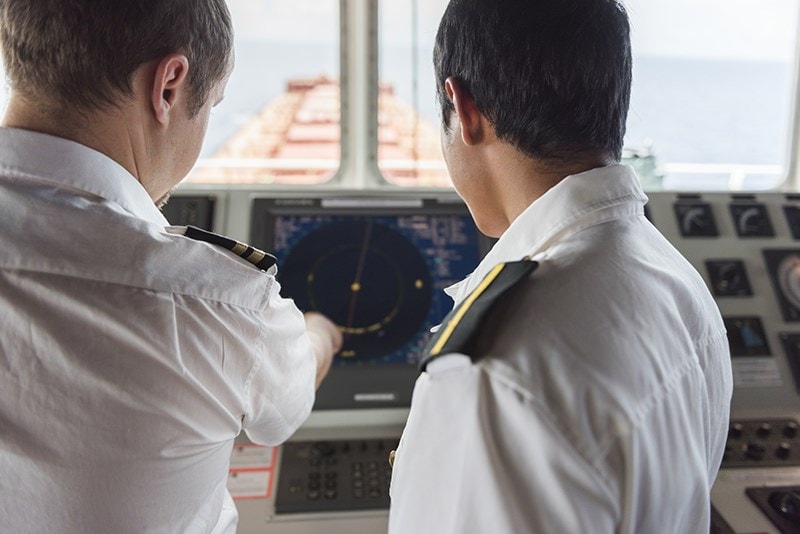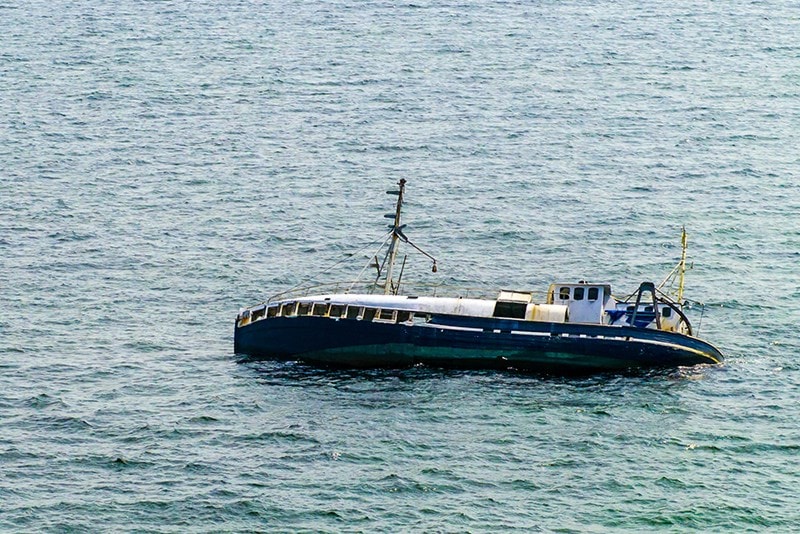China: MSA Issues Safety Guidelines to Prevent Collisions with Fishing Vessels
In 2020, approximately 17,000 fishing vessels operated in Chinese coastal waters, including the Bohai Sea, Yellow Sea, East China Sea, and the South China Sea. Given the large number of fishing vessels that merchant ships may encounter during transit, Masters and navigational officers must conduct a thorough passage plan with clear instructions provided by the Master to the bridge team officers for such interactions.
The Chinese Authorities enforce a fishing moratorium between 01 May and 16 August within their territorial waters, a yearly operating ban on Chinese fishing vessels during this period. When the suspension lifts, it significantly increases the density of fishing vessels operating within these waters.
Due to the large number of collisions involving merchant and fishing vessels within Chinese coastal waters, their Maritime Safety Authority (MSA) has issued safety guidelines to alert merchant shipping of the collision risk.

When planning a passage to a Chinese port or proceeding through Chinese coastal waters, the navigational officers and Master must use all available means to ensure safe berth-to-berth transit. Highlighting areas on the passage plan where there is the expectation of a high concentration of fishing vessels can significantly assist the bridge team when they conduct their navigation watch. Furthermore, in areas deemed to have potentially heavy concentrations of fishing vessels, the Master should consider increasing the bridge team's manning levels and always be contactable when required to assist the officer of the watch (OOW).
China's MSA has recommended that if a vessel is not calling to Chinese ports, her transit route should be undertaken to the east of Taiwan because there are fewer fishing vessels and more sea room available for manoeuvring compared to the waters in the Taiwan Straits.
SOLAS regulation V/19 stipulates that all vessels of 300 gross tonnages (GT) and upwards engaged on international voyages must have an automatic identification system (AIS) fitted. However, most qualifying fishing vessels predominately operate within coastal waters or exclusive from a single homeport and thus equipping them with AIS is not required. Consequently, having the ability to sight identification and information tags on the electronic navigational systems which display AIS data on the bridge may not be available. The OOW should therefore perform radar performance monitoring and regularly check that the radars are tuned correctly to ensure their operation is at peak performance levels to identify all potential radar targets. In addition, all collision avoidance must be conducted using all means, including visually and with radar using the automatic radar plotting aid (ARPA) function to determine whether a risk of collision exists.
Weather data shows that the Yellow Sea experiences an average of 50 days of fog from April to July. With the high probability that vessels will encounter restricted visibility conditions within the area, and therefore no visual sighting until a fishing vessel is nearby, extra lookouts must be added to the bridge team. The lookouts should be posted on the bridge wing when there is restricted visibility to ensure an adequate listening watch for other vessels' foghorns is maintained. In addition, the Master and OOW must ensure the applicable Rules as per the Convention on the International Regulations for Preventing Collisions at Sea (COLREGS) for restricted visibility and sound signals are observed to mitigate the risk of collision. Furthermore, vessels must always proceed at a safe speed according to the visibility and density of traffic conditions.
Based on China's MSA accident statistics, most collisions between merchant and fishing vessels have occurred between 23:00 and 04:00 hours. This period is generally when the Master will be resting. Subsequently, the provision of clear and concise Master's night orders to the OOW is vital to tackle instances where there is doubt about a navigational scenario. The OOW must make any assistance calls to the Master within sufficient time to permit the Master the necessary time to fully assess the situation and take appropriate action(s) to avoid a collision.

When a fishing fleet is sighted visually and/or by radar, the recommended course of action is to make a bold alteration of course and avoid the fleet of fishing vessels altogether. Such action may require the vessel to proceed off course for a considerable distance. Before doing so, the OOW must ensure there are no navigational hazards. In particular, there is sufficient depth for the vessel's safe navigation when altering from the vessel's planned tracks. Additionally, they must plan to return to the original planned route once the fishing fleet has been passed cleared. As the vessel will be deviating from the planned track, it is also advisable to inform the Master about these intentions. If the OOW decides to go through a fishing fleet, this may put the vessel at a greater risk of collision requiring additional alterations and speed reduction. Before committing to the said decision, the OOW must conduct a risk assessment.
China's MSA has advised that fishing vessels may not have or display the correct navigation lights and shapes per the COLREGS Rule 26 – Fishing vessels. Consequently, it would be prudent to consider that vessels proceeding at around 3 knots are likely to be engaged in fishing operations in areas where fishing fleets may be expected. Therefore, if the bridge team is unsure whether a vessel is participating in fishing operations or is a power-driven vessel, it should be treated cautiously until positively identified.
Merchant vessels must be aware that the crew may not attend the bridge of a fishing vessel during fishing operations or when anchored. If the risk of collision exists, then action to avoid collision should be taken if in doubt. The OOW must also be aware when altering course to avoid fishing vessels that they may have fishing gear out, which may require further alteration. At night these will generally be seen by flashing lights marking out the net.
Even when merchant vessels take early action, be aware that fishing vessels can be erratic and may alter course towards the other vessel, returning the navigational situation to a risk of collision. All available means to avoid a collision situation are to be used, including sound and light signals prescribed within COLREG Part D - Sound and Light Signals. When there is a failure to understand the intentions or actions or doubt whether sufficient actions have been taken, the ship's whistle must be sounded with at least five short and rapid blasts. This sound signal can be supplemented by the same light signalling sequence, i.e. with the ALDIS lamp, towards the fishing vessel to get their attention. Although using the Marine VHF radio might be considered, there will invariably be a language barrier with the fishing vessel crew leading to further confusion. Subsequently, using VHF radio communication for collision avoidance purposes is never recommended.
Should the navigational situation result in unavoidable close-quarter interaction with fishing vessels, the bridge team must keep a constant visual sighting of the fishing vessel to ensure the fishing vessel has passed well clear of the vessel. In the unfortunate event where a collision occurs, or the bridge team suspects there may have been a collision, the Master must be called immediately if not already present on the bridge. Furthermore, the bridge team must act prudently and quickly in response to the situation, and as a minimum, we would recommend the following:
Record the geographical position of the incident.
Record all the details about the fishing vessels, i.e. hull colour, any identification markings. Photographs and videos may be invaluable as these vessels' name may be in logogram/logograph format.
Manoeuvre the vessel back towards the incident location.
Remain at the incident location by either sailing in proximity or stopping and drifting at the site.
Start search and rescue (SAR) protocols and provide all assistance to those in distress if required.
Contact the nearest MRCC informing them about the incident, current situation and compile with their instructions.
Preserve all documentation and electronic data, i.e. initiate voyage data recorder (VDR) preservation protocols.
Notify the Maritime Safety Authority, which has jurisdiction over the waters where the incident occurred. Do not resume on the vessel's intended voyage until cleared to do so by the MSA.

A key takeaway point within the MSA's report which vessel Owners, Masters, OOWs and Deck Ratings as watchkeepers must pay attention to is that the Chinese Authorities consider these incidents with absolute seriousness. The vessel and her crew will be detained and face both financial and criminal penalties. Regardless of which vessel caused the collision or bore most responsibility, should an incident between a merchant and fishing vessel be perceived as a "hit and run" by the merchant vessel, the MSA will take a very harsh line. In this instance, the vessel's detention may be for many months, her Owners will face significant fines, and the responsible officers and crew members will be criminally charged and face imprisonment.
China's MSA Safety Guidelines for Preventing of Collision between Merchant Vessels and Fishing Vessels in Chinese Coastal Waters can be seen here - Guideline For Prevention Of Collision Between Merchant Vessels And Fishing Vessels In Chinese.
Members requiring further guidance should contact the Loss Prevention department.
